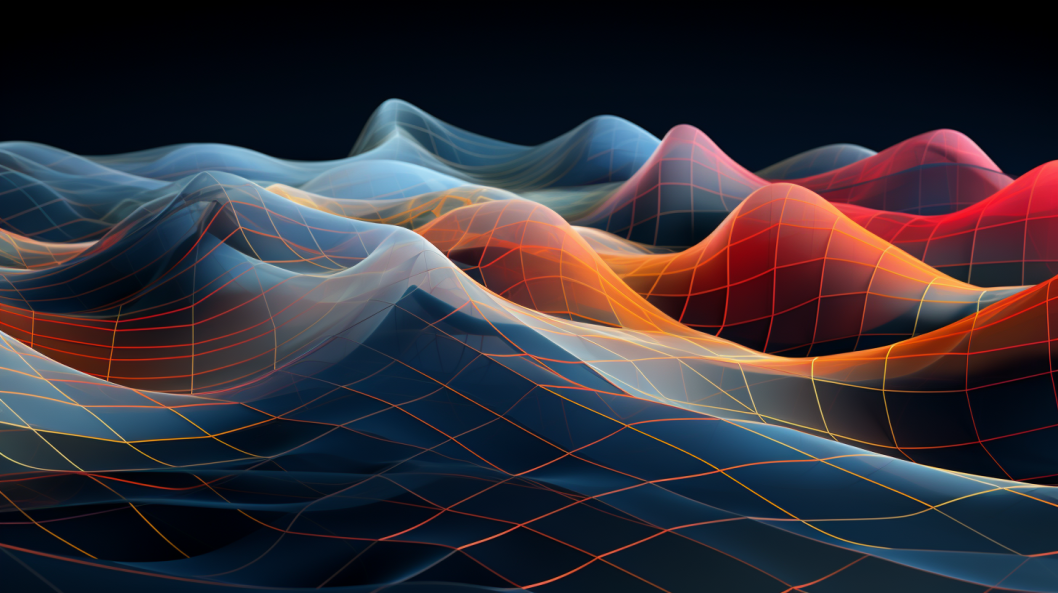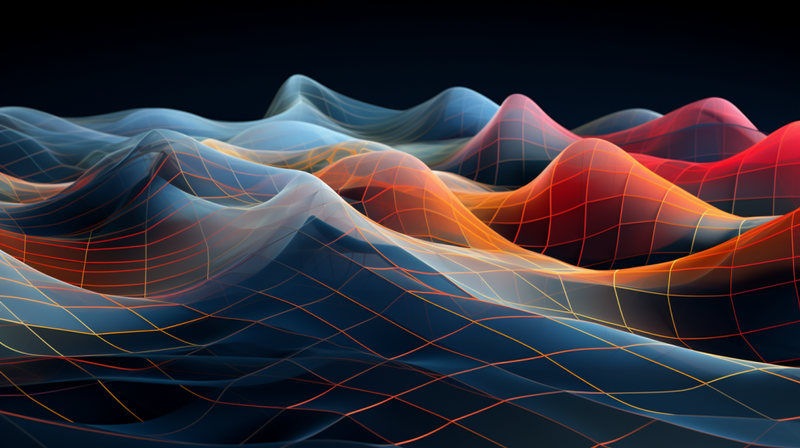In a world tethered to structured order and symmetry, a vast canvas of design possibility often lies neglected. "Beyond the Grid" is not merely a philosophy but a celebration of amorphousness and a tribute to non-linear creativity. Embracing non-linear design, especially through the lens of computational geometry, means fostering a kinship with complexity, chaos, and, paradoxically, a different kind of order. It underscores an evolution towards creating spaces, structures, and patterns that defy traditional geometry, unleashing a universe where design is liberated from the conventional shackles of straight lines and predictable patterns.
Considering that the utopian ideal of unfettered design, the unfolding of this continuum is where designers and architects embark upon a boundless journey of exploration, delving into the very essence of form and space to invent new paradigms of visual and physical experience. The relationship between voids and solids, the dialogue between light and shadow, and the intertwining of form and function all converge into a harmonious dance of seemingly chaotic yet subtly orchestrated patterns. It paves the way for the rise of structures and spaces that are as fluid and dynamic as the natural world, embodying an equilibrium that permeates every crevice of their form.
Enveloped by this ethos, designers begin to weave a tapestry that transcends the tangible, venturing into a domain where emotional and visceral connections with space become paramount. It's a dimension where buildings breathe, patterns pulse, and spaces evolve, granting inhabitants and observers the freedom to interpret and engage with them in multifarious ways. In the absence of rigid guidelines, perceptive experiences and emotional resonances guide the formation and transformation of designs, opening portals to myriad possibilities where every curve, angle, and colour spill into realms of untold narratives.
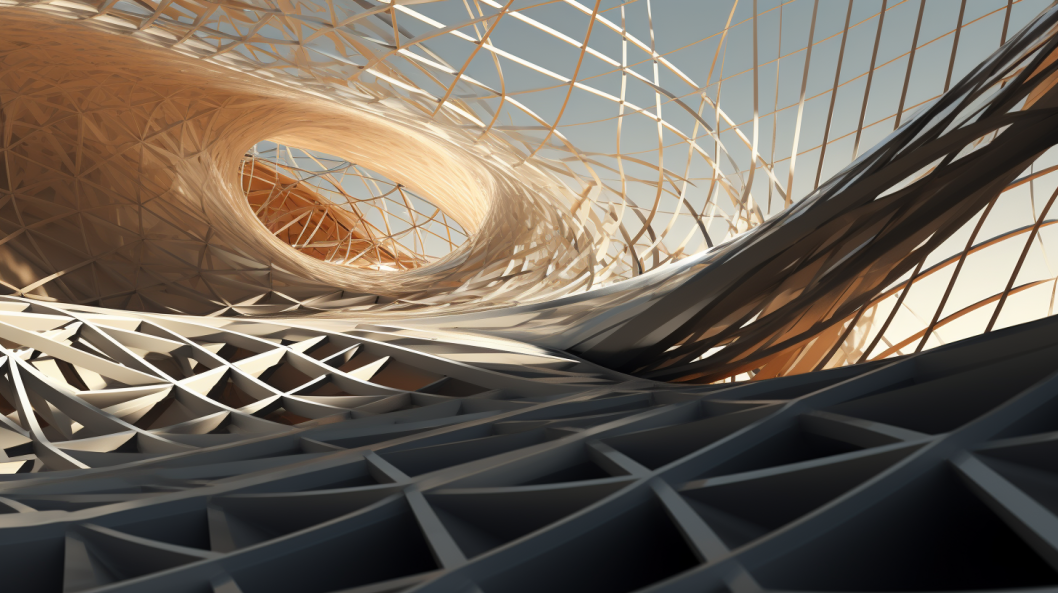
Non-Linear Design: A Necessary Anomaly
Traditionally, design frameworks, whether in architecture, graphics, or digital platforms, have adhered to grids as foundational structures. Grids represent order, easy navigation, and stability; they provide a systematic, logical layout that ensures balance and proportionality. However, they also impose limitations, confining creativity to structured blocks and restricting the flow of natural forms.
Non-linear design surfaces as a necessary anomaly, providing pathways to explore uncharted territories within the design realm. It encourages the interplay of curves, erratic shapes, and unpredictability, enabling designers to create more organic, fluid, and intuitive spaces. Through the chaos, it introduces a unique, albeit hidden, order, bridging the gap between computational precision and abstract aesthetics.
The Role of Computational Geometry:
Harnessing Complexity:
Computational geometry allows for the management and navigation of complexity in non-linear designs. It enables designers to model, analyze, and manipulate spatial forms using algorithms, thereby turning seemingly chaotic patterns into calculable, manageable entities.
Modeling Nature’s Chaos:
Nature itself is a vast tableau of non-linear designs, from the intricate web of tree branches to the amorphous formation of clouds. Computational geometry allows designers to imitate and manipulate these naturally occurring patterns, fostering designs that are in harmony with natural elements and forms.
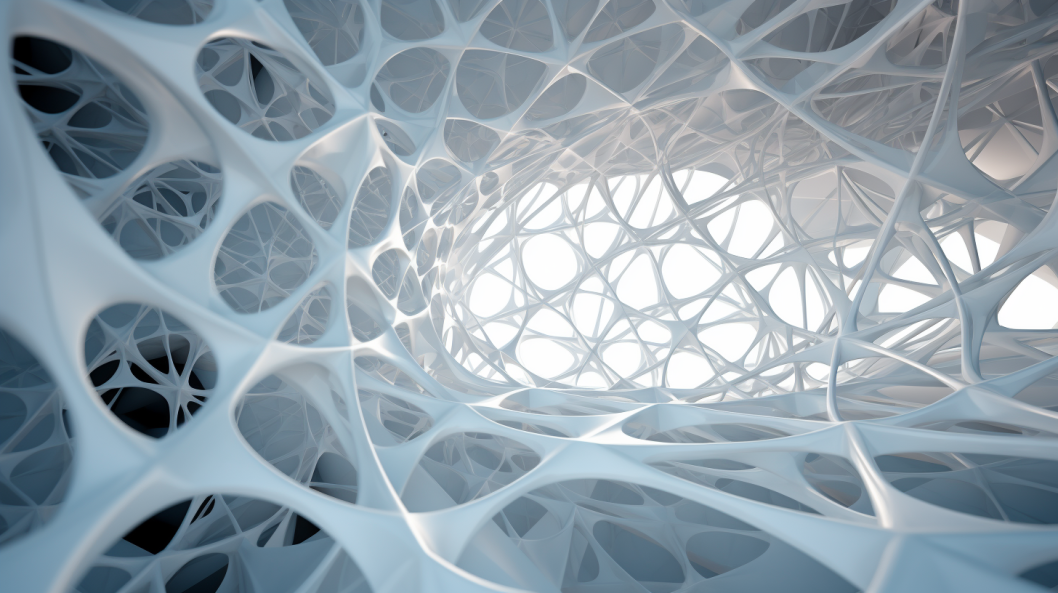
Innovation in Architectural Forms:
In architecture, computational geometry assists in envisioning and realizing structures that go beyond traditional linear edifices. By enabling architects to manipulate spatial coordinates and relationships through algorithms, it opens up possibilities for constructing buildings that are not only functional and structurally sound but also artistic marvels.
Interactivity and User Experience:
In the digital realm, non-linear design enabled by computational geometry can significantly enhance user experience and interactivity. By allowing design elements to break free from rigid structures, users engage with more dynamic, responsive, and immersive digital environments.
Reimagining Spaces and Structures:
Non-linear design transcends mere aesthetic value. It brings forth a multitude of benefits across various domains:
Biomimicry and Sustainability:
Through non-linear design, architects and designers can embrace biomimicry, drawing inspiration from nature to create sustainable solutions. Computational geometry allows these complex, nature-inspired designs to be translated into practical, buildable forms.
Emotive Connectivity:
Spaces and objects designed with a non-linear approach tend to resonate more deeply on an emotive level, forging a connective tissue between the built environment and its inhabitants.
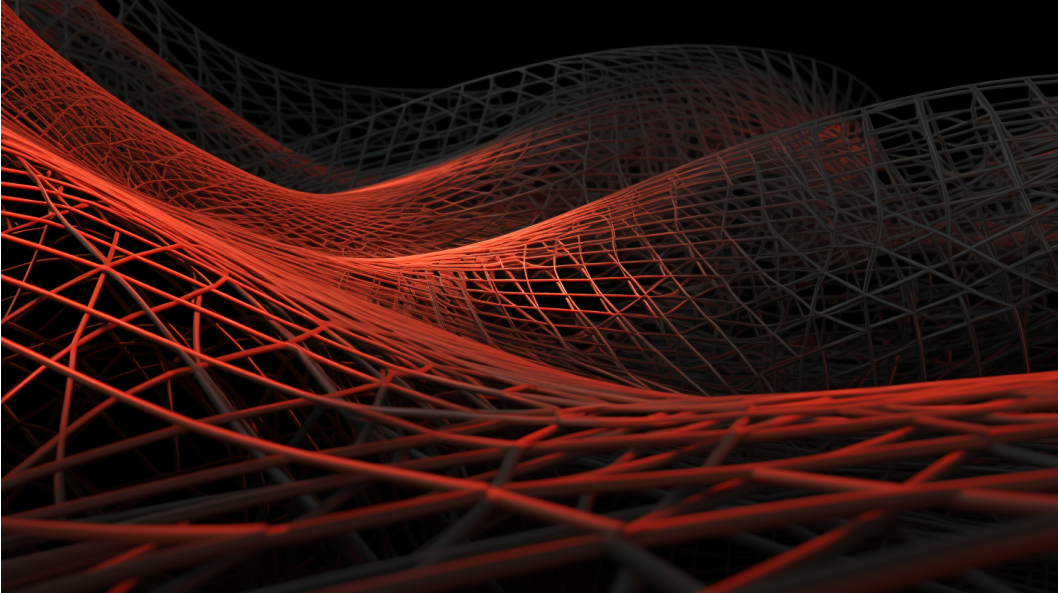
Problem Solving:
Solutions to intricate design challenges, especially in spatial optimization and resource allocation, often reside outside the grid. Here, non-linear design acts as a tool for problem-solving, unlocking innovative answers to complex issues.
Inclusive Design:
Non-linear design, driven by computational geometry, can also lead to more inclusive design practices, creating spaces and structures that are adaptable and accessible to a diverse user demographic, thus embodying a universality that traditional designs may sometimes lack.
Towards a Non-Linear Future
The voyage beyond the grid, although chaotic, unfolds a universe teeming with unrestricted creativity and untapped potential. Embracing non-linear design through computational geometry is not just a step but a leap towards an innovative, sustainable, and emotively rich future. It is an invitation to explore, to make mistakes, to learn, and to eventually uncover a design ethos that is reflective of both the chaotic and harmonious elements of nature and human intuition.
In a world grappling with environmental, social, and technological challenges, moving beyond the grid, albeit symbolically, offers not just innovative design solutions but also metaphorical pathways to tackle issues with an open, unrestricted mindset. This paradigm not only reshapes our physical and digital worlds but also reconstructs our cognitive frameworks, encouraging approaches that are multi-dimensional, inclusive, and inherently humane.
